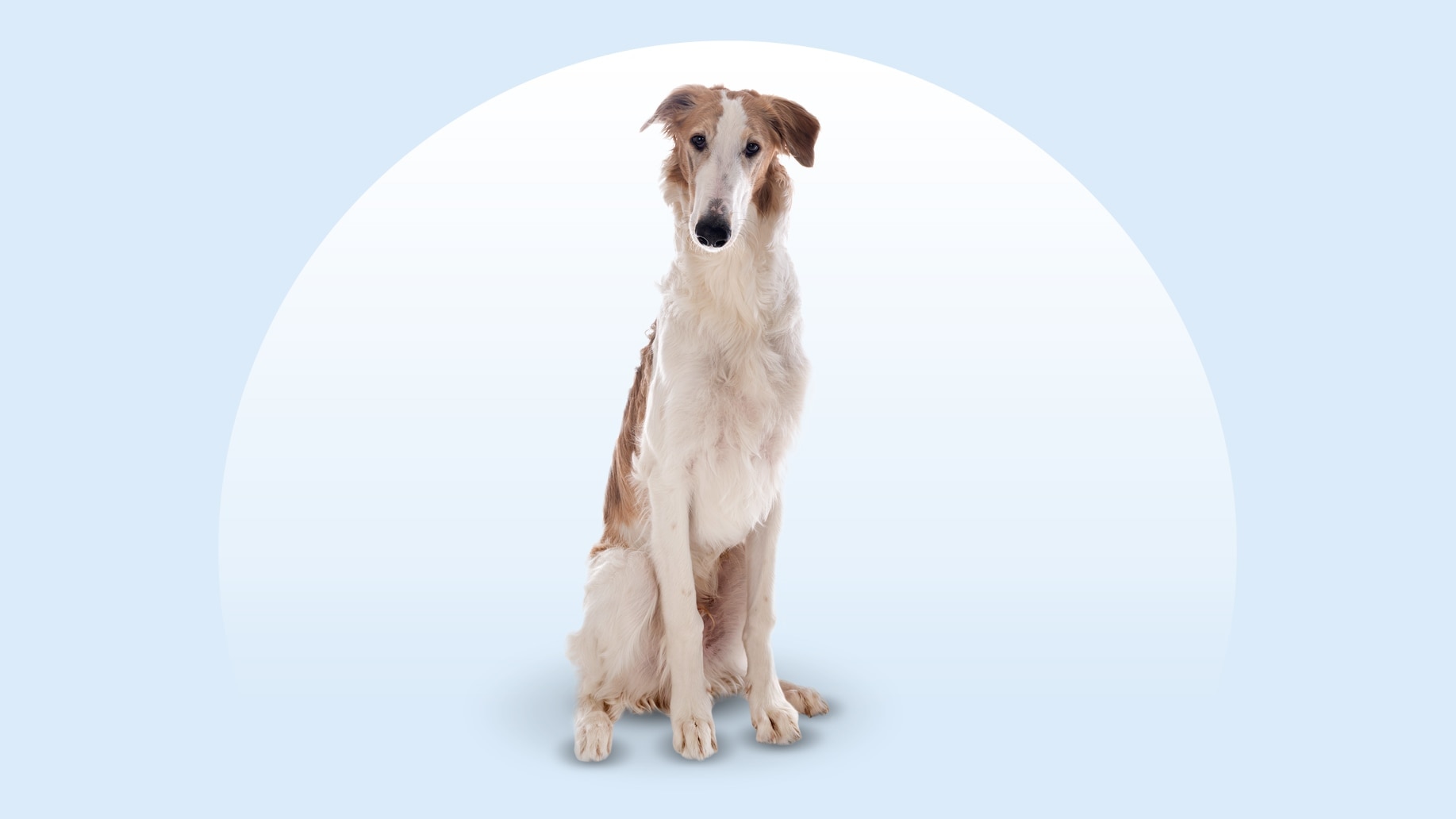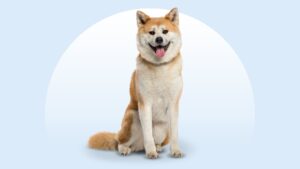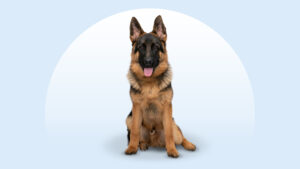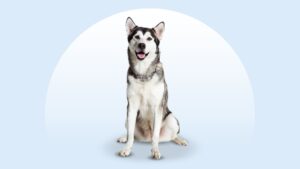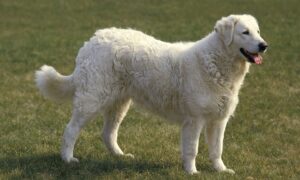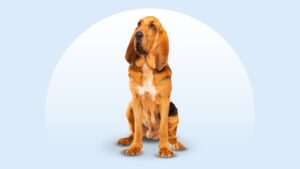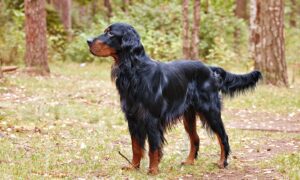Borzoi
Updated December 15, 2025
Borzoi
Updated December 15, 2025
A graceful Russian sight hound with a gentle demeanor, the Borzoi has a long, silky coat that’ll be the envy of every dog on your street. A true and loyal best friend, they also need dedicated space to run (they’re known for their impressive speed).
Athletic, Elegant, Mellow
60–105 pounds
26 inches and up
9–14 years
Black and Cream, Black and Brindle, Silver Brindle, Gold Brindle, Silver Sable, Gold Sable, Brindled Sable, Sabled Gold, Sabled Red
Do you have that one friend who’s effortlessly elegant—tall, aloof, and ever so mysterious? That’s the Borzoi. This independent dog is picky about the company they keep, so if you tend to keep your inner circle tight, you’ve found a kindred spirit.
While a Borzoi’s grace and elegance might be intimidating to a stranger, this pup will surprise you at home by being a total mush and faithful friend—they’ll even mellow out with you on the couch.
But that doesn’t mean they don’t love exercise; in fact, a fenced yard is ideal for these athletic canines. They can reach speeds of up to 40 mph, and they need somewhere to safely let all that energy out.
Borzoi Characteristics
Borzoi Appearance
The epitome of grace, the Russian Borzoi dog is also strong and athletic with a long, silky coat and full tail. They have a long face and intelligent eyes.
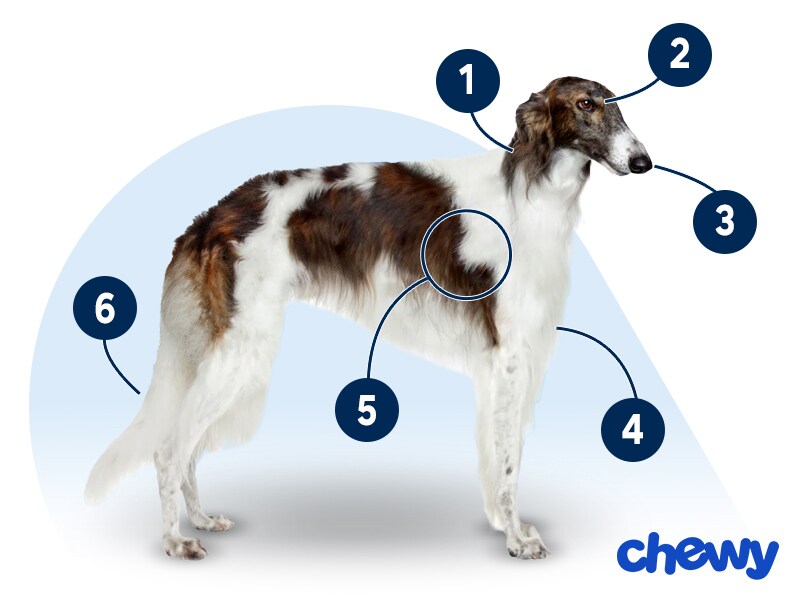
- Ears
A Borzoi’s ears are delicate and small compared to their large body. They rest flat when the dog is relaxed.
- Eyes
Their eyes are dark and oval-shaped.
- Nose
Their nose is large and black.
- Coat Length
Their coat is silky and long, and the fur might be flat, wavy, or curly. Their coat is especially feathery on the neck, back, and tail.
- Coat Color
Borzoi dogs come in a range of colors, including black and brindle (subtle tiger stripes), black and cream, brindled sable (where the hair is lighter at the base and darker at the tips), gold brindle, gold sable, sabled gold, sabled red, silver brindle, and silver sable.
- Tail
Their tail is long and feathered; Borzoi use it as a rudder to navigate while running.
Borzoi Temperament
The Borzoi personality is independent-minded with a regal air. They have the gracefulness typical of sight hounds—that is, pups who were bred to hunt by sight, not scent.
Because of that lineage, Borzoi aren’t above shedding a moment of grace to chase a squirrel or any other small animal. For that reason, it’s wise to have these clever, agile pups on a leash when you’re out and about.
Borzoi may also tend to chase cats or other small pets, unless they’ve been trained and socialized otherwise. They’re often aloof around strangers, but again, socialization can help them be comfortable around new people and other pets.
When not running or chasing, these gentle pups love nothing more than to collapse on the couch for a long nap with you.
Although they’re quite mellow, a Borzoi might not be a fan of small children—but it wholly depends on the kid’s vibe. If your little one tends to be calm and patient during interactions, then it could be a match.
However, the tranquil Borzoi temperament means they’re unlikely to be happy with rambunctious children who might not understand they’re a canine who needs their personal space, just like people do.
How to Care for a Borzoi
Caring for the Borzoi breed takes time and patience. Their coat is high–maintenance, and they shed a lot. Borzoi dogs have a lot of energy to burn, too, but this pup is well worth the effort.
Grooming
Training
Diet
Exercise
Environment
Borzoi Health
The typical Borzoi lifespan is 9–14 years. Here are some health issues to be aware of.
- Anesthesia sensitivity: Borzoi are sight hounds with lean muscle mass and low body fat. Because of this build, they absorb drugs slowly, meaning that they’re slower to recover from general anesthesia or heavy sedation. Discuss any concerns with your vet.
- Bloat and gastric dilatation-volvulus (GDV): Borzoi, like many large breeds, are prone to a life-threatening condition called bloat, which is when air and/or food fill the stomach and cause it to distend. Sometimes, the stomach will twist, cutting off blood flow to abdominal organs. This is called gastric-dilatation-volvulus (GDV).
- Bloat and GDV are potentially deadly medical emergencies. If you notice symptoms like abdominal distension, restlessness, excess drooling and panting, and dry heaving, go to the vet immediately.
- Elbow and hip dysplasia: Elbow and hip dysplasia are genetic conditions that develop during puppyhood when the joints don’t align well and become looser than normal. Both may be treated with weight loss, reduced activity, joint supplements, physical therapy, pain meds, or (in severe cases) surgery.
- Hypothyroidism: Common in this breed, hypothyroidism includes symptoms like lethargy, hair loss, skin infections, ear infections, and weight gain. A blood test can diagnosis it, and treatment involves lifelong medication.
- Osteosarcoma: Osteosarcoma is a painful bone cancer common in many large-breed dogs. This cancer is unfortunately very aggressive, but treatment may include chemotherapy, pain management, and/or surgery.
- Progressive retinal atrophy (PRA): PRA is the degeneration of the retina that can lead to blindness in dogs. There is no treatment, but dogs often adjust well to vision loss and live full, happy lives.
Borzoi History
As early as the 1600s (long before they came to be called Borzoi), these majestic dogs were prized by Russian aristocracy. They were hunting dogs bred to chase wolves, and one of these scenes was even depicted in Russian writer Leo Tolstoy’s “War and Peace.”
The early Borzoi dogs, called Russian Wolfhounds, may have been a cross of a Greyhound and a Russian Sheepdog.
But the Borzoi’s popularity tragically plummeted after the Russian Revolution of 1917, as the dogs had been closely linked to the Romanovs and the aristocracy. They could have gone extinct, but luckily, enough dogs survived to continue the breed abroad.
Borzoi were first recognized by the American Kennel Club in 1891 but truly came into their own in 1936, when their name officially changed from the Russian Wolfhound to the Borzoi.
The Borzoi Club of America was founded in 1903 under the name of the Russian Wolfhound Club of America.
Borzoi puppies are usually $1,500–$5,000. If you choose this route, pick a responsible breeder.
You can also adopt a Borzoi. Check out a rescue organization like the National Borzoi Rescue Foundation, keep an eye out for the breed at your local animal shelter, or search Chewy’s database of adoptable dogs in your area.
